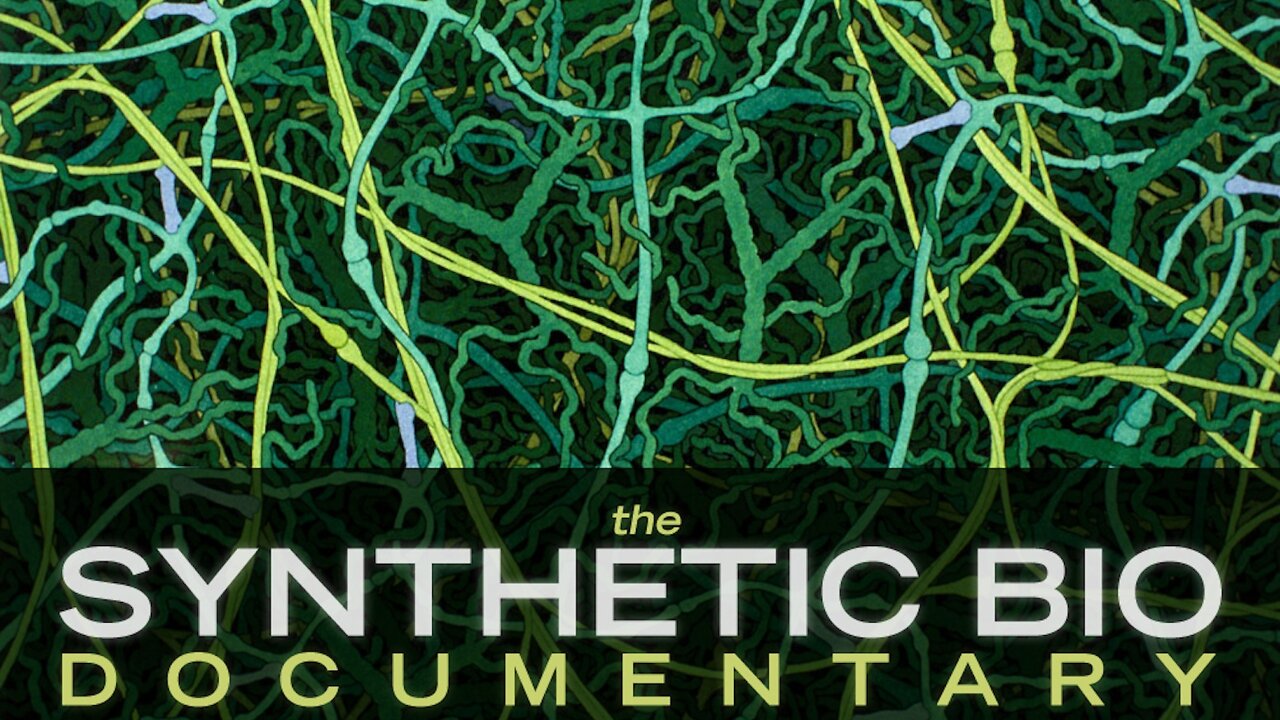Premium Only Content

SYNTHETIC LIFE FORMS ARE A THREAT TO ALL LIFE ON EARTH
SYNTHETIC LIFE FORMS ARE A THREAT TO ALL LIFE ON EARTH
A Documentary Film about Synthetic Biology
Engineering Synthetic Life has been made by so inexpensive that you can now Create Synthetic Life out of your Garage.
WHAT COULD GO WRONG?
HOW ABOUT KILLING OFF AND REPLACING ALL LIFE ON EARTH?
Synthetic Biology is re-engineering life by making genes like lego bricks, and DNA into a programing language like binary code.
Is the World Ready for Synthetic Life? Scientists Plan to Create Whole Genomes
Shelly Fan May 22, 2016
Last weekend, an invite-only group of about 150 experts convened privately at Harvard. Behind closed doors, they discussed the prospect of designing and building an entire human genome from scratch, using only a computer, a DNA synthesizer and raw materials.
The artificial genome would then be inserted into a living human cell to replace its natural DNA. The hope is that the cell “reboots,” changing its biological processes to operate based on instructions provided by the artificial DNA.
In other words, we may soon be looking at the first “artificial human cell.”
But the goal is not just Human 2.0. The project, “HGP-Write: Testing Large Synthetic Genomes in Cells,” also hopes to develop powerful new tools that push synthetic biology into exponential growth on an industrial scale. If successful, we won’t only have the biological tools to design humans as a species — we would have the ability to redesign the living world.
Manufacturing Life
At its core, synthetic biology is a marriage between engineering principles and biotechnology. If DNA sequencing is about reading DNA, genetic engineering is about editing DNA, synthetic biology is about programming new DNA — regardless of its original source — to build new forms of life.
Synthetic biologists view DNA and genes as standard biological bricks that can be used interchangeably to create and modify living cells.
The field has a plug-and-play mentality, says Dr. Jay Kiesling, a pioneer of synthetic engineering at the University of California at Berkeley. “When your hard drive dies, you can go to the nearest computer store, buy a new one, swap it out,” he says, “Why shouldn’t we use biological parts in the same way?”
To accelerate the field, Kiesling and colleagues are putting together a database of standardized DNA pieces — dubbed “BioBricks” — that can be used as puzzle pieces to assemble genetic material completely new to nature.
To Kiesling and others in the field, synthetic biology is like developing a new programming language. Cells are hardware, while DNA is the software that makes them run. With enough knowledge about how genes work, synthetic biologists believe that they will be able to write genetic programs from scratch, allowing them to build new organisms, alter nature and even guide the course of human evolution.
Similar to genetic engineering, synthetic biology gives scientists the power to tinker with natural DNA. The difference is mostly scale: genetic editing is a cut-and-paste process that adds foreign genes or changes the letters in existing genes. Often, only a few sites are changed.
Synthetic biology, on the other hand, creates genes from scratch. This allows scientists far more opportunities to make extensive changes to known genes, or even design their own. The possibilities are nearly endless.
Biodrugs, Biofuels, BioCrops
The explosion of synthetic biology in the past decade has already churned out results that thrilled both scientists and corporations.
-
 1:02:53
1:02:53
The Charlie Kirk Show
7 hours agoTHOUGHTCRIME Ep. 71 — Airline DEI Again! Fed Redditors? Gayest Movie Ever?
93K54 -
 1:57:34
1:57:34
Kim Iversen
11 hours agoRFK Jr., Tulsi, Kash Patel SHRED Senate Clowns—Democrats Humiliated!
123K164 -
 3:06:08
3:06:08
Laura Loomer
7 hours agoEP 97: Trump's Nominees Transform America
61.1K37 -
 1:03:00
1:03:00
Man in America
15 hours agoThe Helicopter Crash DOESN'T MAKE SENSE... What REALLY Happened???
52.5K75 -
 55:11
55:11
Flyover Conservatives
1 day agoParents WIN, Teachers Unions PANIC! 3 Huge Education Bombshells This Week! - Corey DeAngelis | FOC Show
73.3K5 -
 1:40:20
1:40:20
Glenn Greenwald
11 hours agoTulsi's Hearing Exposes Bipartisan Rot of DC Swamp | SYSTEM UPDATE #400
122K208 -
 1:19:48
1:19:48
Simply Bitcoin
16 hours ago $16.26 earnedJerome Powells MASSIVE Bitcoin Backflip! | EP 1172
89.8K6 -
 58:42
58:42
The StoneZONE with Roger Stone
8 hours agoLBJ + CIA + Mob + Texas Oil = JFK Murder | The StoneZONE w/ Roger Stone
68.6K27 -
 58:00
58:00
Donald Trump Jr.
15 hours agoBreaking News on Deadly Plane Crash, Plus Hearing on the Hill, Live with Rep Cory Mills & Sen Marsha Blackburn | TRIGGERED Ep.212
199K162 -
 52:03
52:03
Kimberly Guilfoyle
14 hours agoLatest Updates on Deadly Air Collision, Plus Major Hearings on Capitol Hill,Live with Marc Beckman & Steve Friend | Ep.192
113K40